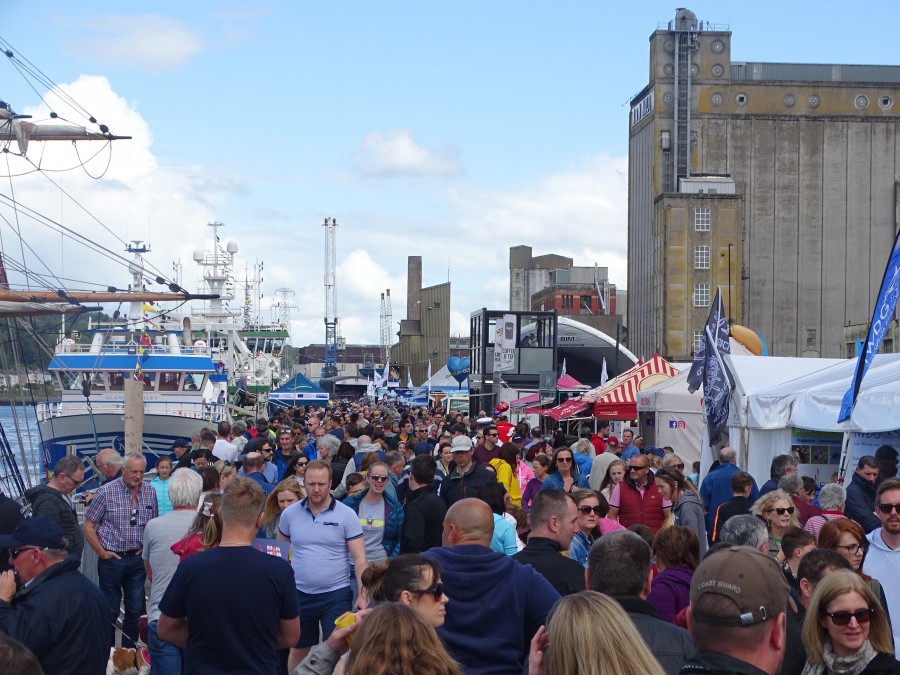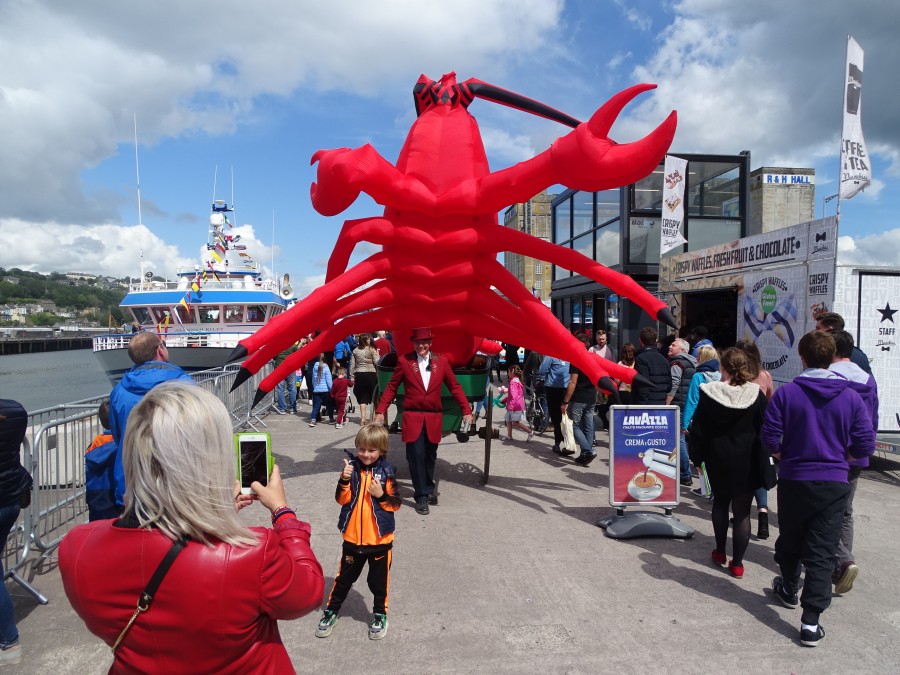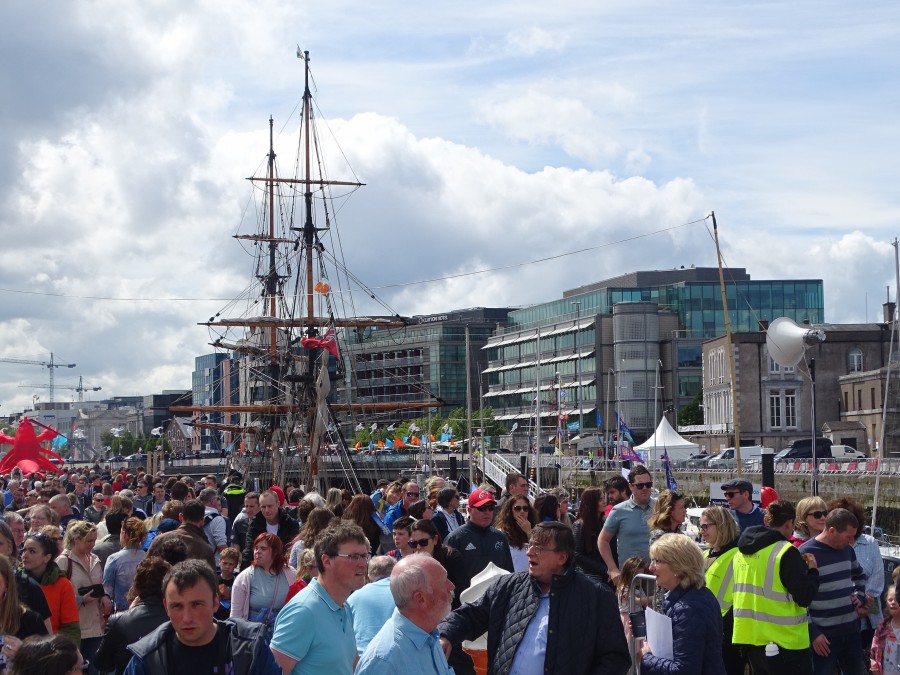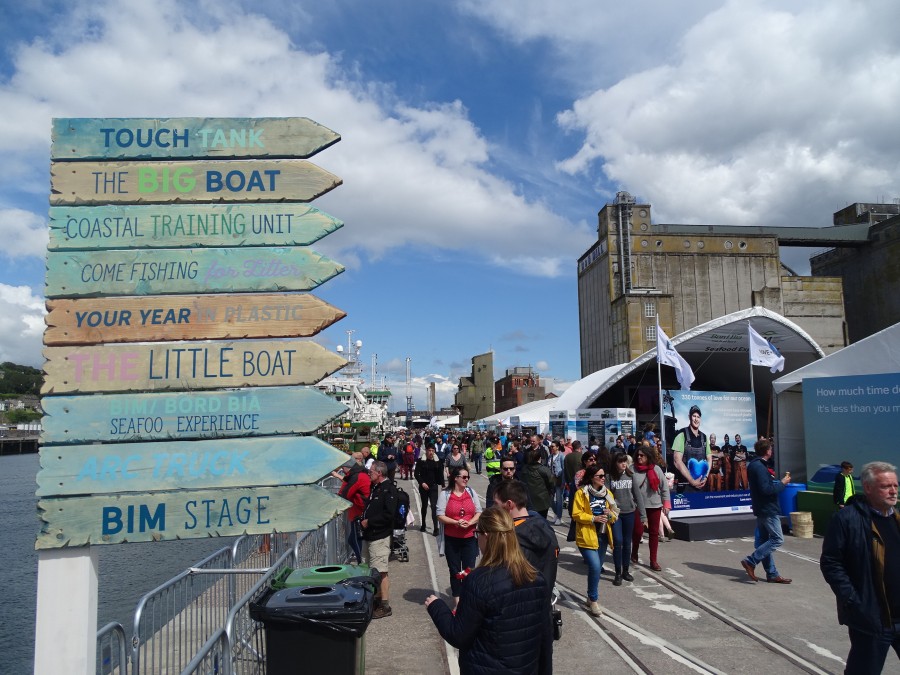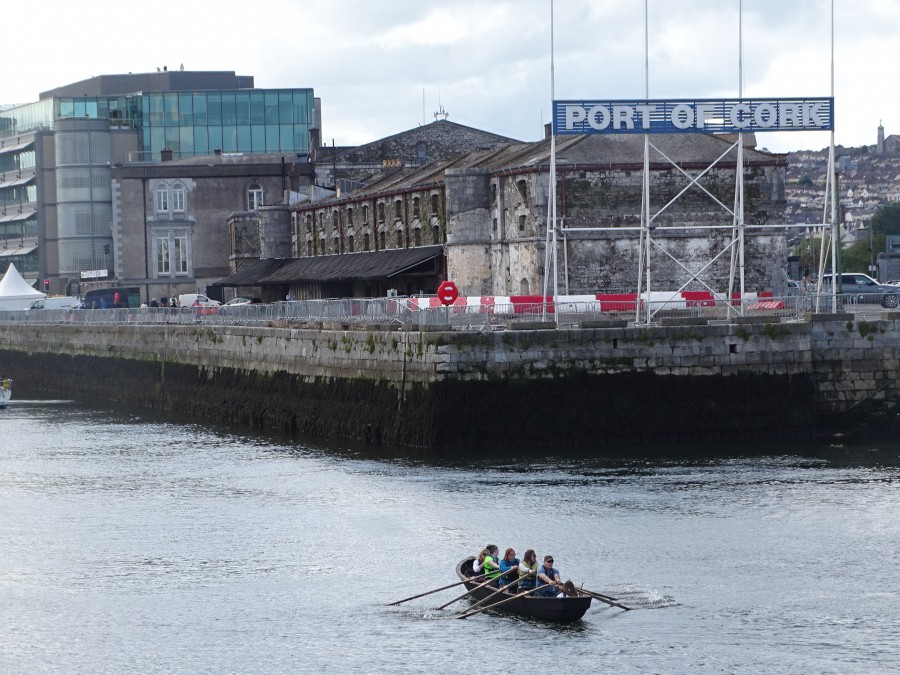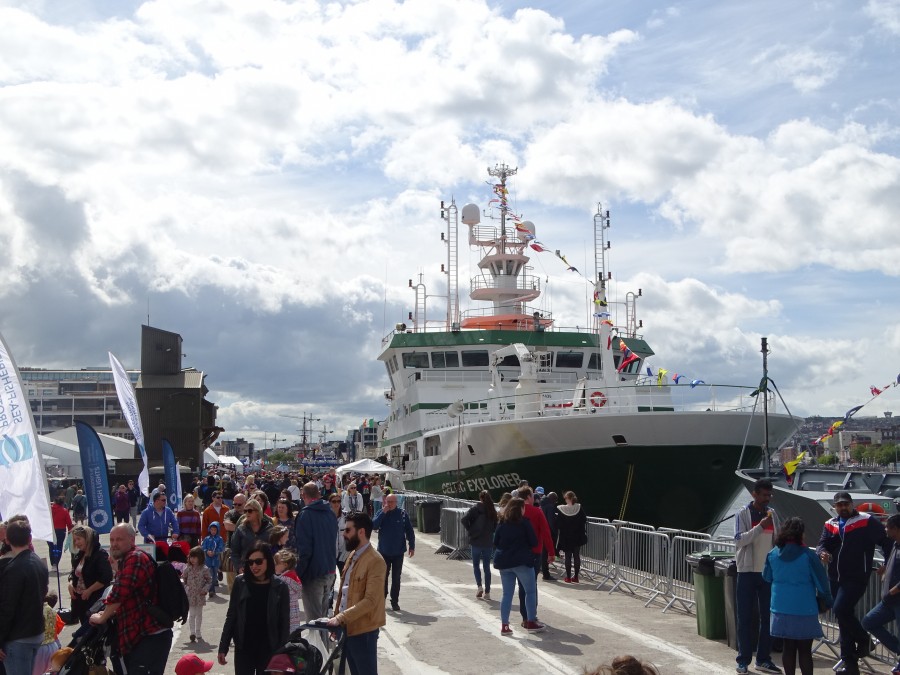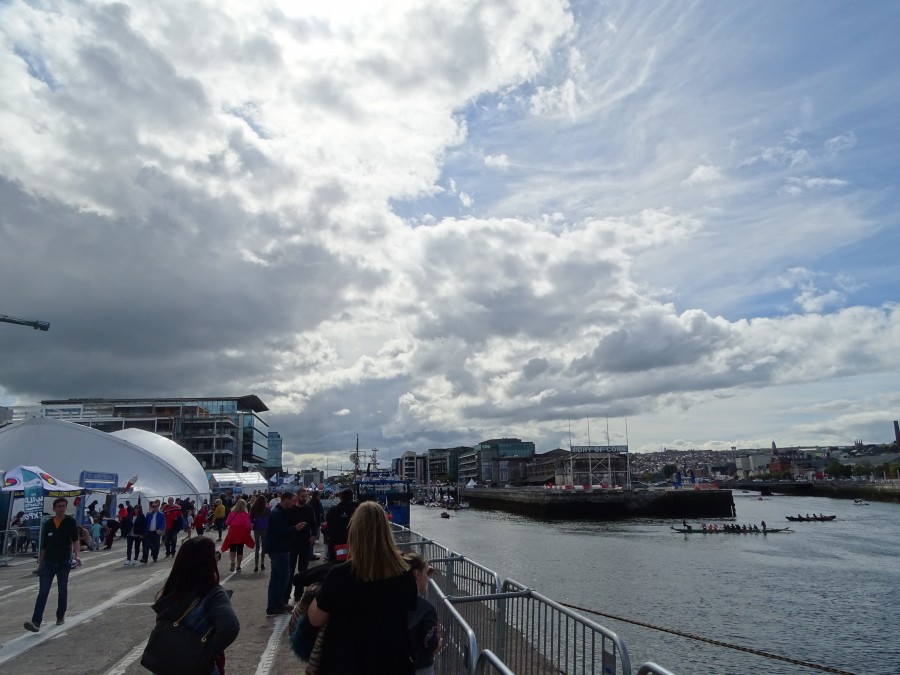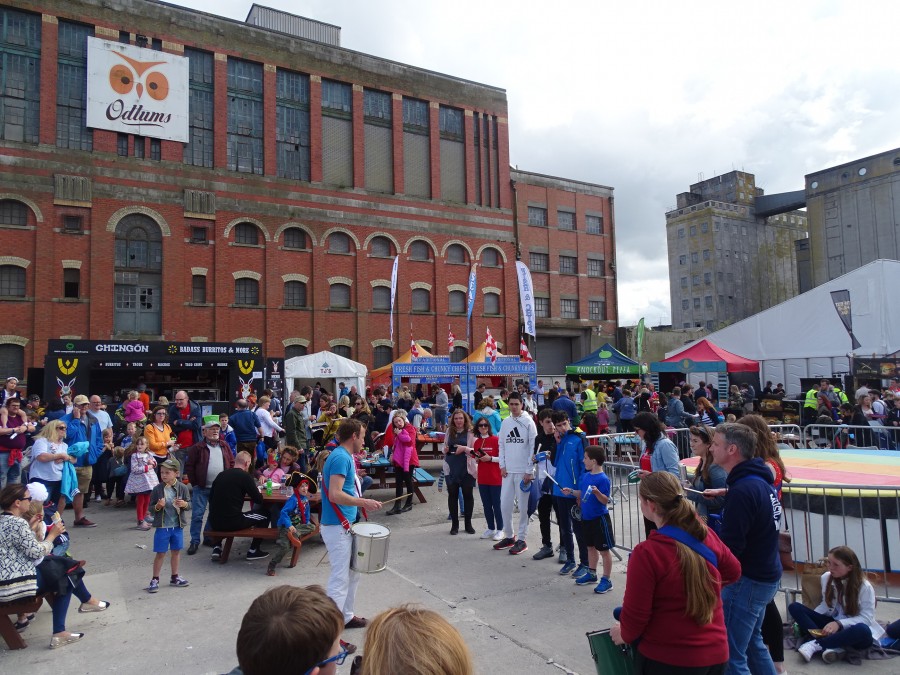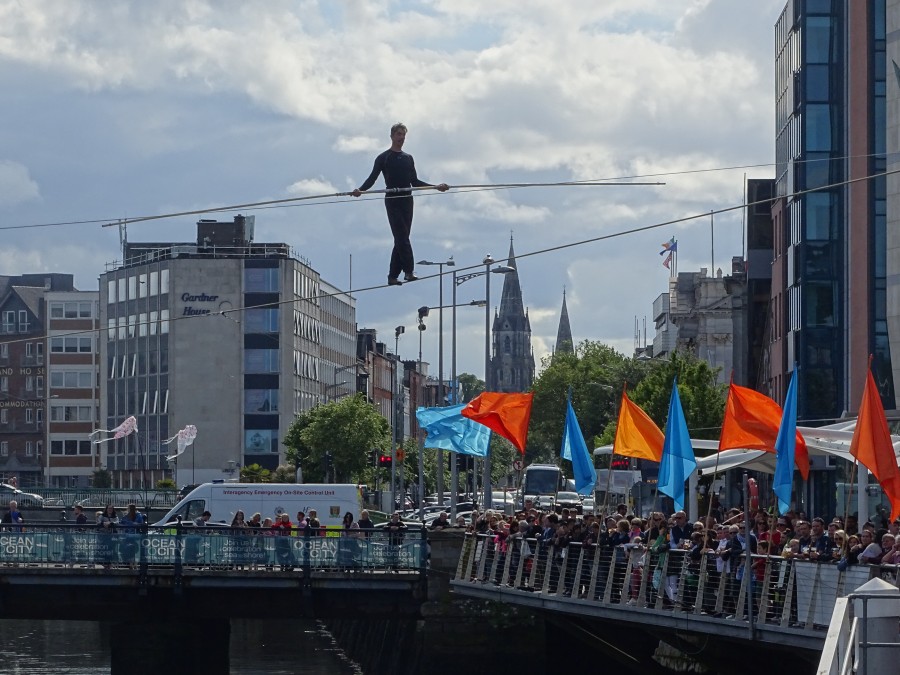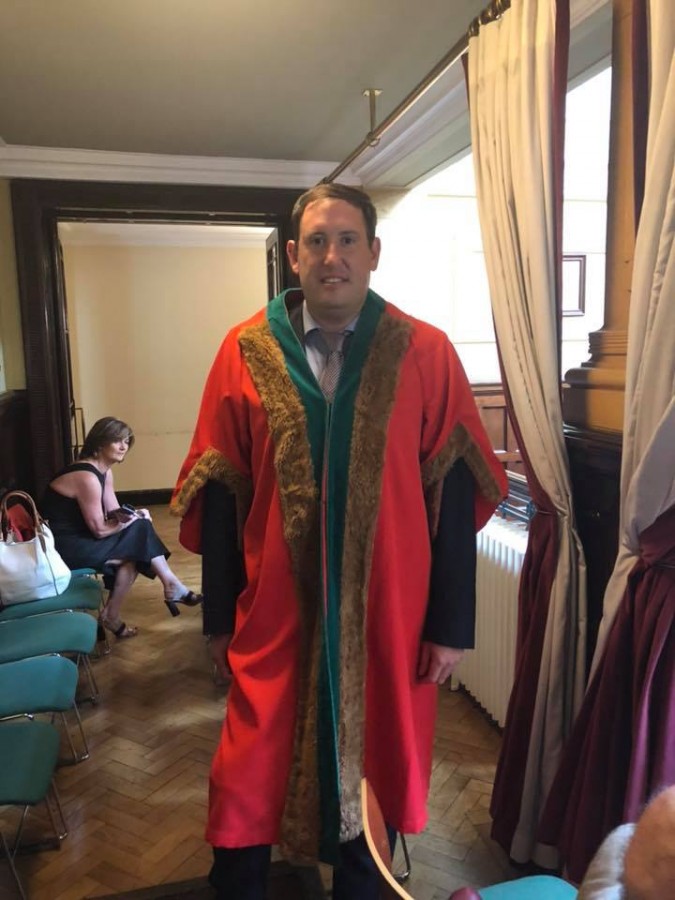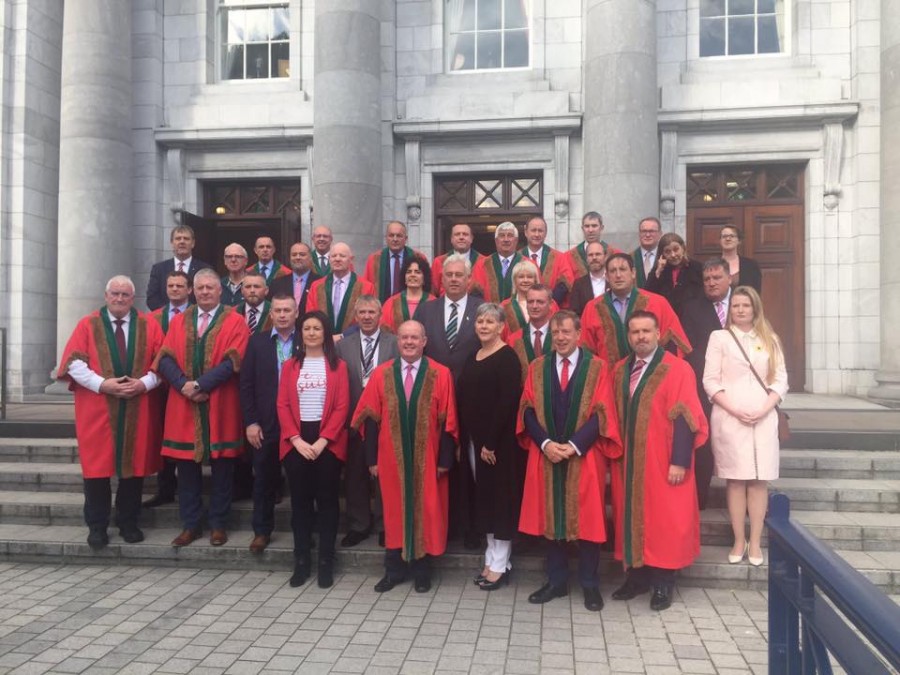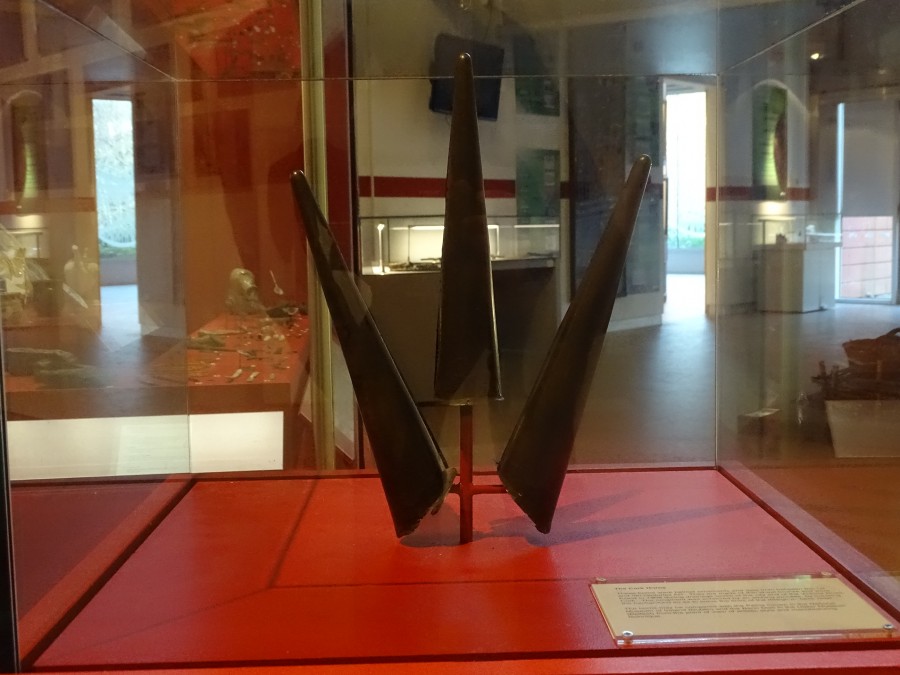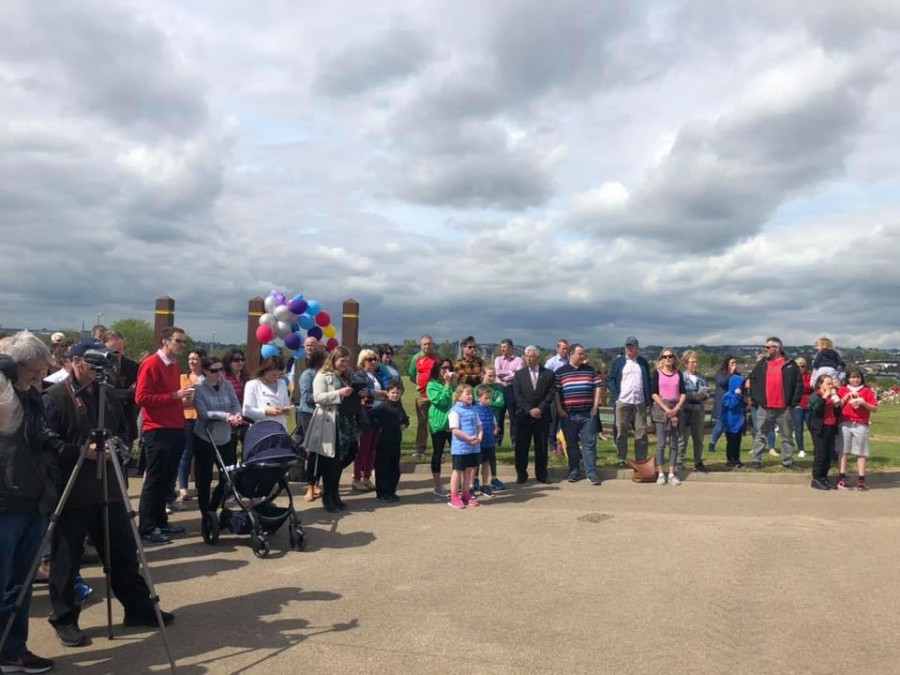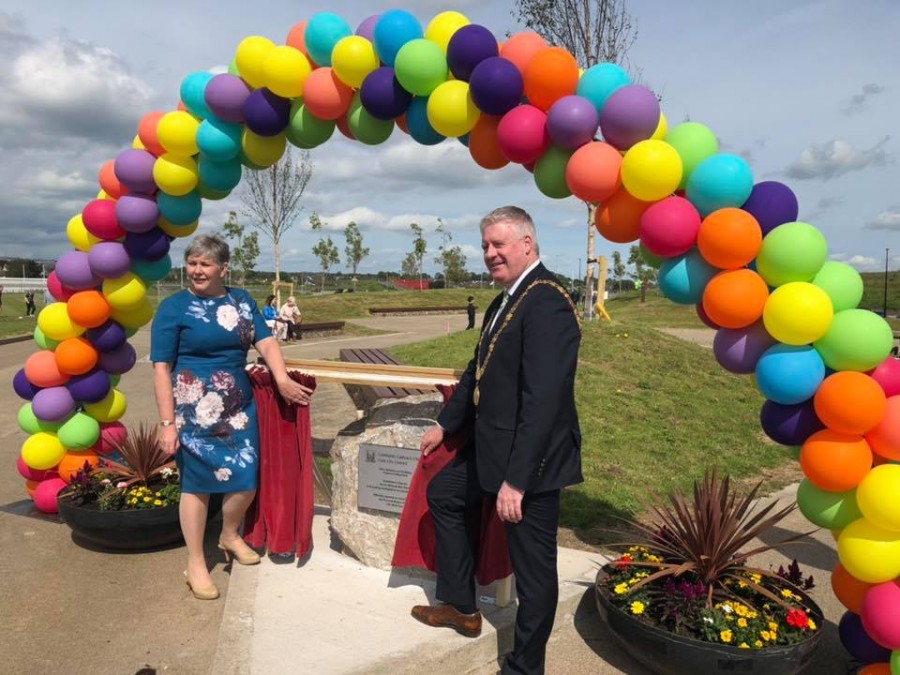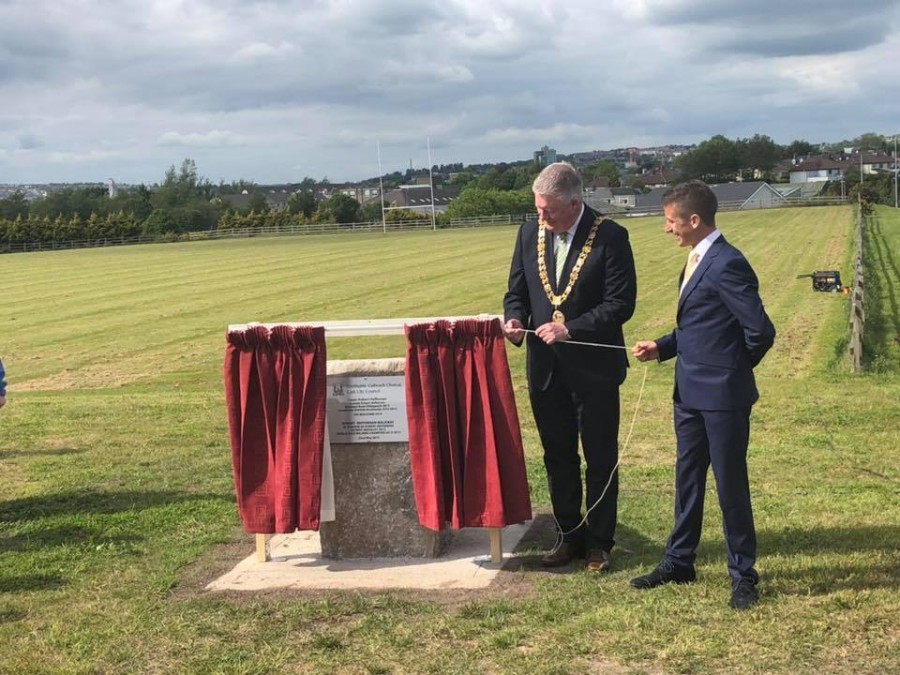Category Archives: Cork City Events
Article 1,000, Our City, Our Town, Cork Independent
SeaFest on Cork’s South Docks, 7-9 June 2019
AGM, Cork City Council, 7 June 2019
Article 1,000, Kieran’s Our City, Our Town, 6 June 2019
Kieran’s Our City, Our Town Article,
Cork Independent, 6 June 2019
Stories from Cork’s Docklands
Welcome to the 1,000th column. To mark the occasion and to also coincide with the launch of my new book, The Little Book of Cork Harbour, and the Cork Harbour Festival and Seafest, the next historical walking tour will be of Cork Docklands on Sunday afternoon 9 June (full details at end of column as well as the June walking tours. Below is another snippet from the new book.
The Cork Horns:
The earliest prehistoric artefact from Cork Docklands was discovered in reclamation deposits near the south jetties in the Victoria Road area of Cork city in 1909. When the excavations for a large tank had gone below river level and while the workmen were working in water, one of them brought up on his shovel a very slender metal cone. Later in the day two other similar cones, attached by metal to each other, were dug up at the same place. From a study of several of the old maps of Cork City, it is clear that in early times this particular area was a tidal salt marsh if not an actual mud flat. Some mud inside the horns resembled the grey mud of slobland along the river. Two of the cones were joined by metal to each other. It appears that the horns were in fact helmet ornaments and perhaps date from the Iron Age. The horns are now on public display in Cork Public Museum.
A Harbour of Shipwrecks:
There are over 400 shipwrecks in Cork Harbour ranging from seventeenth century galleons to twentieth century submarines. The locations of the majority of the 400 though are unrecorded. Ireland’s Underwater Archaeology Unit (UAU) was established within the National Monuments Service to manage and protect Ireland’s underwater cultural heritage. The Unit is engaged in the compilation of an inventory of shipwrecks recorded in Irish waters.
A Modern Port City:
The modern river port of Cork City began to take shape about the middle of the eighteenth century. Consolidation of the marshy islands provided building space and the covering over of the river channels and canals made wide streets possible. Quay walls were built at low water level and could not accommodate ships of moderately heavy burthen, which had to lighten cargo down the harbour for road transport to the city.
Cork Harbour Commissioners:
The formation of the Cork Harbour Commissioners in 1813 concentrated responsibility for the improvement and maintenance of the shipping channels and city’s quays into one organisation. During the following decades the Commissioners instigated an extensive programme of repairing and re-building the quays in limestone ashlar construction and this included the insertion of 8,000 timber toe-piles driven to depths of 21 feet in order to facilitate dredging close to the quays. The Commissioners spent a total of £34,389, raised from harbour fees, between 1827 and 1834 on the improvement of the city quays. Once the quays were in a stable condition the river channels were extensively dredged and the extracted material was used to reclaim areas of slob-land, including the City Park area behind the Navigation Wall. Timber wharfs began to be constructed along a number of the quays in the second half of the nineteenth century, including Albert, Union, Victoria, St Patrick’s and Penrose Quays. In 1874 timber wharves were added to the south jetties. There were seven jetties constructed, each 43 ½ feet wide and initially separated by 120 feet of clear space which were subsequently filled in.
Early Twentieth Century:
During and up to the early years of the twentieth century berths were deepened at low water to keep all shipping afloat at lowest tides. Wharves and deep water quays were built and berths were deepened. In 1919 the Cork Harbour Commissioners acquired from the Board of Trade 153 acres of slobland at Tivoli for the purpose of pumping dredged material ashore, thus creating new land for industrial purposes. This happened over several decades. In the early 1950s oil storage depots were developed on the site. A further ten acres were made available for development circa 1960.
From 1960, modern Cork Harbour began to emerge, with the construction of oil terminals, steel mills, shipyards, deep water ferry port and industrial base. The entire concept of transporting general cargo underwent radical changes with the introduction of containerisation. That brought about revolutionary changes in ports. Whereas previously the only requirements of general cargo services were quays and adjoining transit sheds, the ports now had to provide quays with high load-bearing qualities and wide aprons, specialised container cranes, large marshalling areas for containers and further specialised handling machinery within the container compounds. At Tivoli Industrial and Dock Estate new facilities included new container, roll-on roll-off and conventional berths, a 30-ton gantry-type container crane, a modern transit shed, a passenger terminal and office block and an extensive paved area for the marshalling of containers and commercial vehicles. Thirty-seven acres were allocated for general cargo purposes.
Cork was the first port in Ireland to set up a planning and development department. By 1972 this produced the Cork Harbour Development Plan in which a blueprint was designed for a future which would include sites such as that at Ringaskiddy, Little Island, and Cobh areas. By the middle of the present decade, employment in these industries is likely to exceed 5,000 people and the port’s frequent shipping services are an important factor in attracting new industries.
Next Walking Tours:
Sunday 9 June, Stories from Cork Docklands, historical walking tour with Kieran; meet at Kennedy Park, Victoria Road 2pm, free, duration, two hours, part of the Cork Harbour Festival and Sea Fest, finishes nearby.
Saturday, 22 June, The Friar’s Walk; historical walking tour with Kieran; Discover Red Abbey, Elizabeth Fort, Barrack St, Callanan’s Tower & Greenmount area; Meet at Red Abbey tower, off Douglas Street, 11am; free, duration: two hours.
Sunday 23 June, The Lough & its Curiosities; historical walking tour with Kieran, explore the local history from the Legend of the Lough to suburban development; meet at green area at northern end of The Lough, entrance of Lough Road to The Lough; 2.30pm (free, duration: two hours).
Captions:
1000a. The Cork Horns on display in the Cork Public Museum (picture: Kieran McCarthy)
1000b. Albert Quay, c.1900 – Suttons is now marked by the Clayton Hotel formerly the Clarion Hotel on Lapp’s Quay (source: Cork City Museum)
City Hall begins consultation on new Cork Docklands road network
City Hall begins consultation on new Cork Docklands road network,
https://www.echolive.ie/corknews/City-Hall-begins-consultation-on-new-Cork-Docklands-road-network-11423e1c-840a-46d1-8558-604cb337c826-ds

